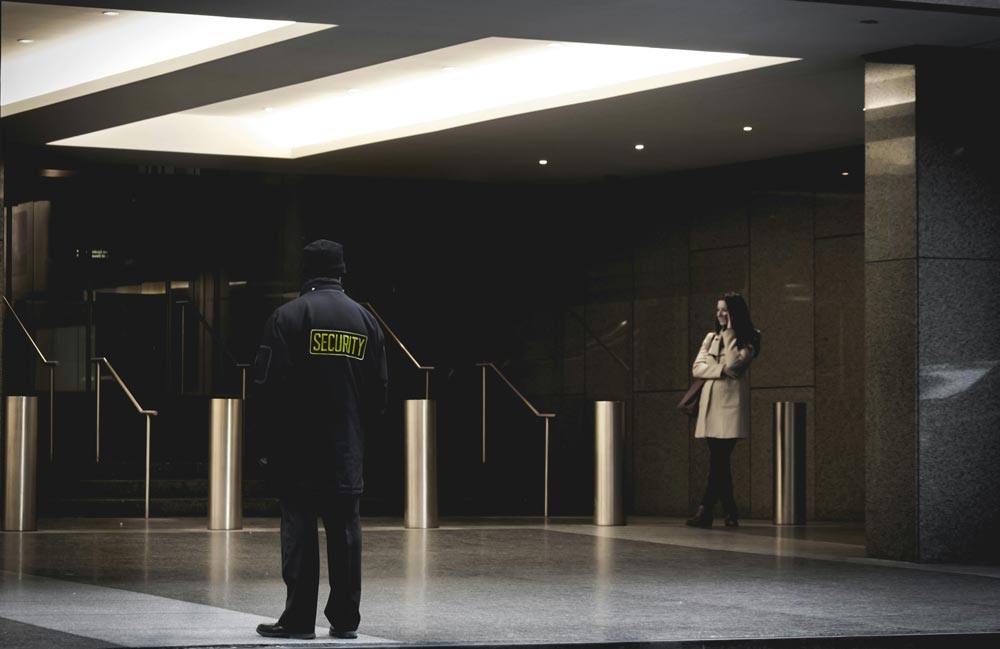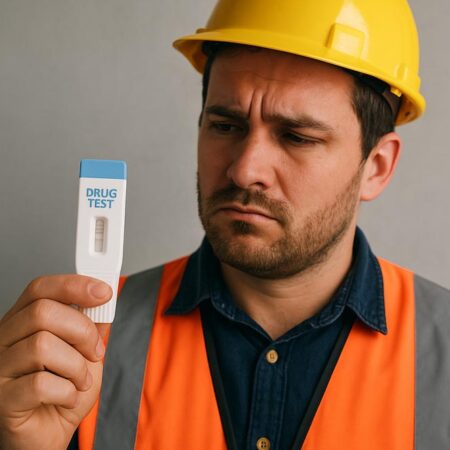It’s not often you get the chance to be judge, jury and executioner—but today, that opportunity is yours. In this real-life case, a security guard was dismissed after returning a positive drug test. But was the decision justified? Or was it an overreaction?
We’ll lay out the facts as they happened, the events leading up to the drug test, the worker’s admission and the employer’s response. Then, we’ll ask you to put yourself in the shoes of the employer and ask whether you would have dismissed the employee.
We’ll also look at what happened next, when the security guard brought a case before the Fair Work Commission (FWC) for unfair dismissal. Did the FWC agree with the employer or the employee?
This is going to be interesting. Ready? Let’s get into it.
The non-negative drug test result
A full‑time security guard had served a major distribution centre since March 2022. He worked mainly overnight shifts, monitoring gatehouse access and reacting to incidents like fires or break‑ins—duties requiring constant alertness.
Late last year a colleague found drug paraphernalia—a bong—in the site microwave. This led the employer to suspect drug use by staff and to initiate mandatory testing. The guard in question was one of these tested, early one morning.
During the testing, he admitted he had used methamphetamine and MDMA within the prior seven days, believing they would be out of his system by his return to duty.
The drug test results and disciplinary meeting
- The initial saliva screen came back non‑negative for methamphetamine. A second confirmatory test was sent to a laboratory.
- The lab returned a positive result for amphetamine at 36.8 ng/mL and methamphetamine at 208.3 ng/mL—well above the company’s threshold of 50 ng/mL.
Once the confirmed positive was received from the laboratory, the company issued a show‑cause letter to the employee and initiated a disciplinary meeting. In the meeting, the employee admitted he was a drug user on his days off but said he did not know traces would remain. He also said he was unaware of the employer’s drug and alcohol policy,
The employer reminded the guard that he had signed an employment contract when he began working for the company. That contract clearly stated that being under the influence at work is serious misconduct. Furthermore, during his induction, he had signed an acknowledgement that he had read and understood the company’s policies, including their workplace drug and alcohol policy.
The security guard’s employment was terminated immediately.
What are you thinking so far?
- Did the company act reasonably?
- Should someone be dismissed for past drug use if there is no evidence they were impaired while on duty?
- Where should workplaces draw the line between a valid policy breach and proportional discipline?
The Fair Work Commission hearing
At the FWC hearing, the facts and opinions were laid out by both parties.
The employer’s case was backed up by expert medical evidence from a toxicologist. The expert stated that the levels of methamphetamines recorded by the guard pointed to recent drug use, likely within a few hours of the test. However, the expert also stressed that testing cannot precisely fix dose, frequency, or timing of ingestion
The FWC noted that the evidence of the expert was significant, but so too was lack of evidence in establishing exact time of consumption and whether the guard was impaired during his shift.
So, what did the FWC find?
They found in favour of the employer. Essentially, FWC held that the guard did breach the company’s workplace drug and alcohol policy by recording a methylamphetamine level of 208 ng/mL, far exceeding the 50 ng/mL threshold. The FWC was not satisfied that the dismissal was harsh, unjust, or unreasonable. In short this constituted a valid reason for dismissal.
Key learnings for workplaces
Based on this case and broader FWC guidance, here are four essential take‑aways for workplaces:
- A robust and detailed workplace drug and alcohol policy is a must. It should include key aspects such as permitted substances and thresholds, testing triggers (random, post‑incident, suspicion), and consequences for breaches.
- The policy must be clearly integrated into employment contracts and inductions. All employees must actively acknowledge they understand the policy, a vital aspect if a breach is contested.
- Drug testing methods must follow specified procedures and meet legal and privacy standards. Employers must treat results confidentially and manage disclosures appropriately.
- When breaches occur, an employer must consistently follow clear procedures. Decisions must be based on evidence. If you dismiss one worker for a breach, similar cases must be treated likewise. Showing consistency reinforces fairness and strengthens defensibility.
What’s your decision?
Did you reach the same conclusion as the FWC?
In this case, the employee had admitted drug use during days off, while test levels strongly suggested recent consumption. Even though there was no evidence of impairment, the positive result alone—under a lawful and clear policy—was sufficient for dismissal.
Therefore, the Fair Work Commission upheld the employer’s decision as within a reasonable response range. Ultimately, the question comes down to what your workplace tolerates. If a security guard—or any safety‑critical role—returns to duty with detectable illicit drugs above thresholds, most modern policies support disciplinary action up to dismissal.
NOTE:
At Integrity Sampling, developing clear, robust, and well‑communicated workplace drug and alcohol policies is one of our key services. If you’d like us to review your policy, or any of your drug and alcohol procedures, get in touch. We’re here to help you create a safer, legally sound work environment.
Source: Human Resources Director
FEATURED IMAGE CAPTION:
Was a security guard’s dismissal after a positive drug test fair? Read this real-life case study, weigh the facts, see the Fair Work Commission’s decision, and discover key lessons for your workplace, and your workplace drug and alcohol policy. Credit Collin https://unsplash.com/photos/security-guard-standing-on-the-gray-floor-8FxJi5wuwKc






